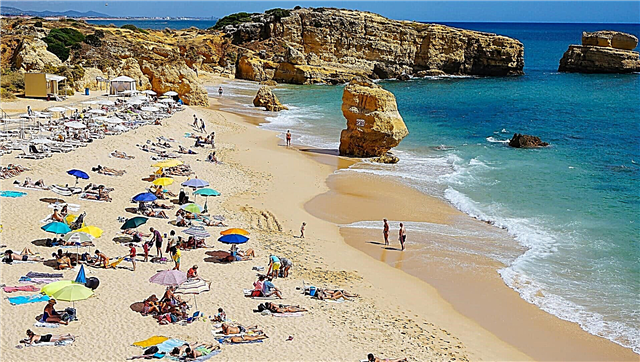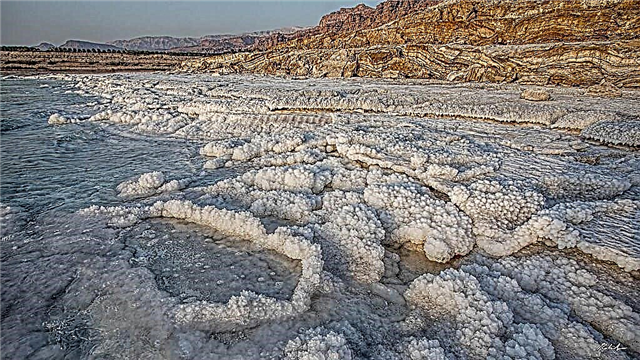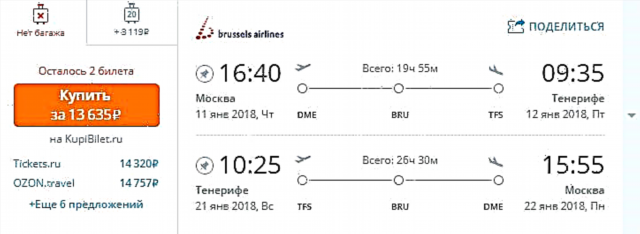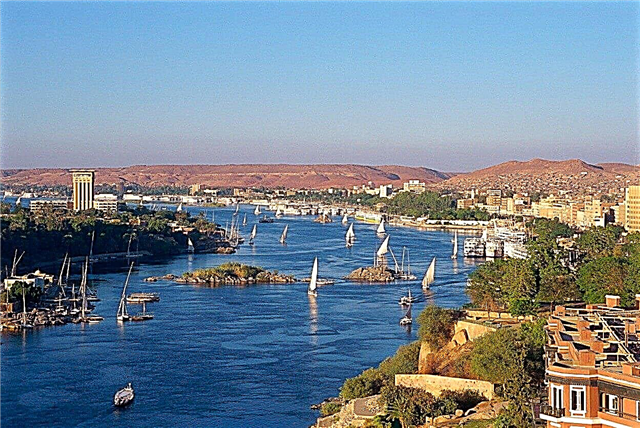Given the general aridity of the continent, the rivers of Africa play a huge role for local residents. Not surprisingly, their basin and shores are mostly densely populated. Farming is best developed in the deltas, and fishing is not just an important occupation, but a necessary condition for their survival. In matters of measuring the length of rivers, researchers do not always agree on the data. The primary reasons are inaccessibility, bends and drying out of the channel.
Among the waterways of the African continent, the Nile stands alone - the longest of the rivers. River tourism is an opportunity to see Africa in all its glory. Picturesque green corners, animals rushing to a watering hole, natural attractions - all this is available to travelers in the Congo, Okavango, Jubba, Mary and other rivers.
Largest rivers in Africa
List of longest rivers on the mainland.
Nile
The longest river in Africa. Geographically it belongs to Egypt, Uganda, Sudan and South Sudan. There are many legends and controversies associated with the Nile. One of them concerns the location of the source of the river. The coastal area is densely populated, especially in Egypt, where 97% of the country's population lives near the Nile. Any sphere of local life is connected with the river. There are unique species of fauna and flora, for example, the Nile perch, which reaches 140 kg.
The length of the river is 6852 km.

Congo
It flows in Central Africa. There are also other names: Zaire, Lualaba. There is a single ramified network of shipping routes. There are many cities on the river, including Kinshasa, the capital of DR Congo. Attractions: Stanley Falls in seven steps and Livingstone Falls, forming a cascade. Lakes Tanganyika and Kivu are part of the Congo water system.
The length of the river is 4374 km.

Niger
The source is in Guinea, it is considered sacred by the natives. It flows through a total of 5 countries and carries its waters to the Gulf of Guinea. The riverbed resembles a boomerang in its shape. There are ports, but shipping is possible only in some areas. In the Niger region, there are 3 national parks and a special protected area - river basin management.
The length of the river is 4180 km.

Zambezi
A river in the southern part of the black continent. It originates in the swamps of Zambia and crosses five more countries before flowing into the Indian Ocean. The reservoir is important for agriculture. In coastal areas, there are populations of many species of animals: zebras, giraffes, crocodiles. The Zambezi is home to a bull shark, also called a blunt shark. The main attraction is Victoria Falls.
The length of the river is 2574 km.

Ubangi
It is a tributary of the Congo, flows in central Africa. Used for crossings, as the rainy season completely erodes many roads in the region. On the river there are large cities, like Bangui, and small villages. The M'Baiki area is considered the main place for pygmies. Main attractions: Elefan waterfall, Azande rapids, Zemongo nature reserve.
The length of the river is 2272 km.
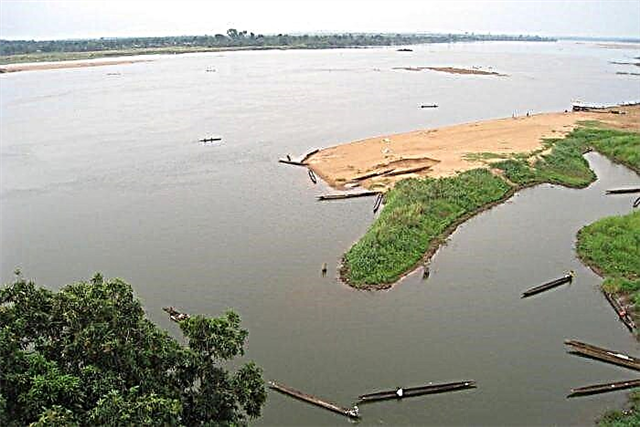
Orange
Refers to the territory of three countries at once: Lesotho, Namibia and South Africa. Named after the Dutch Prince William and the Orange dynasty to which he belonged. It flows into the Atlantic Ocean. Brackish water from it periodically enters the river bed. Shallow water does not allow the use of vessels for movement. The pool is mostly desert covered.
The length of the river is 2200 km.

Kasai
The second largest tributary of the Congo. Refers to the central part of the continent. Part of the channel runs directly along the border of DR Congo and Angola. There is a dense jungle around the shores. Food is mixed, rain and underground. Partially navigable, there is continuous fishing. Diamonds have been mined in the Kasai Basin for decades. The mines and mines are supplied with energy by 3 hydroelectric power plants.
The length of the river is 2153 km.

Blue Nile
Belongs to the territory of Sudan and Ethiopia. Arises from Lake Tana. Slightly less than a third of the river is used for transporting people and goods. Part of the Blue Nile in Ethiopia is considered sacred. Water volumes are highly dependent on the rainy season. At the capital of Sudan, it merges with the White Nile. The construction of the Hydase hydroelectric station is underway. It should solve many of the region's problems.
The length of the river is 1783 km.

Limpopo
It begins at the mountain range in South Africa, and through Botswana, Zimbabwe and Mozambique runs to the Indian Ocean. It is very winding, along the banks there are different reliefs from desert and savannah to hills. Partially navigable, can dry up in the upper sector. The mouth is full of fish and shellfish, including cod and oysters. The Kruger National Park was founded near Limpopo.
The length of the river is 1750 km.

Senegal
It originates in Mali, flows along the border between Mauritania and Senegal. After floods, silt remains, which increases soil fertility. Since the river is actively used, environmental problems appear. Countries have come together to solve them. Several specially protected areas have been created: the Judge Ornithological Reserve, Chat-T-Bul Reserve, Diavaling National Park.
The length of the river is 1610 km.

Okavango
It originates in the Angolan mountains and then carries its waters to Namibia and Botswana. One of the attractions is the rapids of the Popa waterfalls. The Okavango does not flow anywhere; it winds through the delta and dissolves into the swamps on the outskirts of the Kalahari. There are especially picturesque areas with acacias, water lilies and reed thickets. The coast is not inhabited, there are no enterprises, so the water remained clean.
The length of the river is 1600 km.

Volta
Ghanaian river flowing into the Gulf of Guinea. Appeared at the confluence of the Black and White Volta. It is fed by rain, the water level changes throughout the year. It floods heavily from July to October. Thanks to the construction of the Akosombo hydroelectric power station, the reservoir of the same name was formed. There are several ports. However, shipping is limited, and not all ships and boats can pass here.
The length of the river is 1600 km.

Lomami
Belongs to the territory of the DR Congo. There are rapids and waterfalls along almost all the channel. The rainy season is from September to April. The water level rises and the valley floods. In the vicinity of Lomami, there are monkeys and a flowering plant named after the river. Boats are used to move downstream. Trees reach in some parts of the shore directly to the water.
The length of the river is 1500 km.

Benue
It is shared between Cameroon and Nigeria. It is one of the largest tributaries of the Niger. The shores and delta are densely populated, the land is fertile and actively cultivated. Partially navigable, the rainy season increases the area available for ships. The Benue spill in 2012 led to the appearance of a huge number of venomous snakes in the area.
The length of the river is 1400 km.

Vaal
Located in South Africa, the largest tributary of the Orange. Reservoirs have been built on the river so that people do not depend on the season. The river is useful for agriculture and mining. Denisville is home to a popular and modern aquatic center. Here you can take scuba diving lessons and more. One of the tourist attractions is yachting.
The length of the river is 1250 km.

Kunene
It flows in the southwest of the continent. When it flows into the Atlantic Ocean, it forms several bays and diverges into wide arms. Crosses the Namib, without drying out. Sometimes it spills, and the presence of dams and dams also affects the water level. The Kunene Delta has a tourist center, a history museum and protected areas. The main attraction is the Ruacan Falls.
The length of the river is 1207 km.

Avash
River in Ethiopia. It flows into Lake Abbe, and does not reach it during a drought. The national park of the same name was founded in the upper reaches. Here you can observe the populations of antelopes and gazelles. The Avash Valley is included in the UNESCO World Heritage List. Numerous excavations have been carried out here. Evidence of human evolution and the remains of a female Australopithecus were found.
The length of the river is 1200 km.

Draa
The longest river in Morocco, flowing along the border with Algeria. Over time, Draa's origins changed. Now it starts from the reservoir. The coastal area is inhabited, 23 villages and only 2 cities. There are rock carvings and stone figurines in the area. The earliest work of art found here is over 300,000 years old.
The length of the river is 1150 km.

Gambia
Belongs to the western lands of Africa. Before flowing into the Atlantic Ocean, it expands strongly. On the river is the city of Banjul. On the shores there are different species of birds, crocodiles, hippos, gibbons. The relief and types of vegetation along the riverbed replace each other. Mangrove forests turn into steep cliffs, and then dense thickets begin on the plains.
The length of the river is 1130 km.

Uele
Belongs to the territory of the DR Congo. Upstream is called Kibalu. It originates in the Blue Mountains. It is a tributary of Ubangi, when it flows into it it merges with Mbomu. The rainy season lasts from March to October. The reservoir is partially polluted and looks reddish due to the high content of iron oxide. Nearby attraction is Lake Albert.
The length of the river is 1130 km.

Bandama
The longest river in Côte d'Ivoire. In the 70s, a hydroelectric power station was built on it, which still provides the region with electricity. At the same time, due to the dam, Lake Kossu was formed. Rapids and low water levels have limited navigation to a fairly small area. The largest city near the river is Yamoussoukro, the capital of the country. An annual rally is held along the river bed.
The length of the river is 1050 km.

Kwanzaa
Angolan river flowing into the Atlantic Ocean. Partially navigable with large boat restrictions. The lower sector of the valley is used for agriculture, including the cultivation of sugar cane. The largest hydroelectric power station in the country, Kapanda, was built on the river. Kwanza is home to about 50 species of fish. Fishing is popular with locals and visitors alike. Attraction - Lady Victoria Church.
The length of the river is 965 km.

Oti
It flows in West Africa in 4 countries. It flows into the Volta reservoir. There are large tributaries like the Dudodo and Uke. The floodplains are used by local people for grazing when drought strikes. During the rainy season, the coastal forest is partially submerged. There are hunting grounds and areas for crops. It flows through 2 national parks: Penjari and Oti Keran.
The length of the river is 900 km.

Qwando
It can be found in southwest Africa. Belongs to 4 countries, the source is in Angola. It is the right tributary of the Zambezi. During the year, the intensity of the current changes significantly. Some areas around the channel are swampy. It flows or borders on 6 national parks. Reserved and protected areas are designed to restore the populations of various animal species that have suffered in the past from poachers.
The length of the river is 800 km.

Luangwa
Refers to Zambia and Mozambique. Throughout the year, the strength of the flow changes, since the food is rain-fed and the climate is arid. In the lower reaches, the population density is high. The main occupation of the locals is fishing. The catch is impressive even without special devices and tools. Hunting reserves and South Luangwa and North Luangwa national parks are established.
The length of the river is 770 km.

Omo
Ethiopian river flowing into Lake Rudolph. It is much narrower in the mountains than in the plain. There are rapids along almost the entire length. In the full-flowing period, it is used for rafting. The construction of a cascade of hydroelectric power plants should resolve the issue of supplying the capital with electricity. The main attraction is the historical monument Omo-Kibish. The remains of the most ancient people were found here.
The length of the river is 760 km.

Jah
River Cameroon, one of the largest tributaries of the Congo. It is navigable, but mostly small boats can pass. The Ja Faunal Nature Reserve is located in the delta. Since 1987 it has been included in the UNESCO World Heritage List. Its goal is to preserve the region's tropical forests. Also, the Nki National Park was founded near the river. Poachers got into the habit here for ivory.
The length of the river is 720 km.

Fish
River in Namibia. It flows through the driest areas of the country, so part of the year is shallow or dries up altogether. There is a reservoir formed by the construction of the dam. This reservoir of fresh water is a salvation for the region during especially harsh periods. Cities are founded on the shores, although there are few inhabitants. Sightseeing: the eponymous canyon and the Ay-Ice resort.
The length of the river is 650 km.

Kuiseb
Namibian river flowing through the desert. Can dry out completely within a year. After heavy rains, it is filled with water again. Despite such volatility, it is important for an extremely arid region. It is the border of two relief zones. On one side lie deep red sand dunes, on the other - wastelands, mostly covered with light sand.
The length of the river is 560 km.

Umm-er-Rbiya
It flows through the territory of Morocco. The stream is heterogeneous, more violent and impetuous in the mountains. In summer it grows shallow, exposing areas of the bottom. It is actively used for agricultural activities. Six dams regulate drainage and water levels from season to season. The main recharge comes from rains and melting mountain snows.
The length of the river is 556 km.

Tugela
It originates in the Drakensberg Mountains in South Africa. Numerous tributaries have expanded the basin. It flows into the Indian Ocean. Local residents are engaged in agriculture and forestry. There are endemics among the ichthyofauna. The main attraction is the waterfall of the same name, which is the highest in Africa. Tugela was the border between the land of the farmers and the kingdom of the Zulu.
The length of the river is 502 km.

Jubba
The source is on the border with Ethiopia, and the main part of the channel is in Somalia. The river serves as an important waterway. Used for irrigation of fertile fields. There is a lot of vegetation on its shores due to high humidity and a large amount of precipitation. Hyenas, gazelles, giraffes, hippos gather at the watering hole near the shore.
The length of the river is 497 km.

Ruaha
River of Tanzania. There are problems with drying out, so several large wildlife protection funds are working on this issue. A hunting reserve functions in the lower reaches. Diverse flora and fauna, about 400 species of birds. Rich potential for fishing, partially realized. The river basin is densely populated.
The length of the river is 480 km.

Mara
It flows in Kenya and Tanzania. It flows into Lake Victoria. In the vicinity of the river, the Masai Mara reserve is organized. The ungulates living in it make their migration routes through the Mara. For some of them, this route turns out to be deadly, since there are many crocodiles on the shores. The territory of the Ikorongo reserve stretches a little further. Here the channel makes several turns.
The length of the river is 395 km.

Salum
Belongs to the territory of Senegal. In some areas it is very winding. Numerous bends of the channel in a small area create bizarre natural landscapes. Particularly picturesque parts of the coast are overgrown with mangrove forests. The national park of the same name was formed in the Salum delta. Since 1981 it has been a UNESCO protected biosphere reserve.
The length of the river is 250 km.




